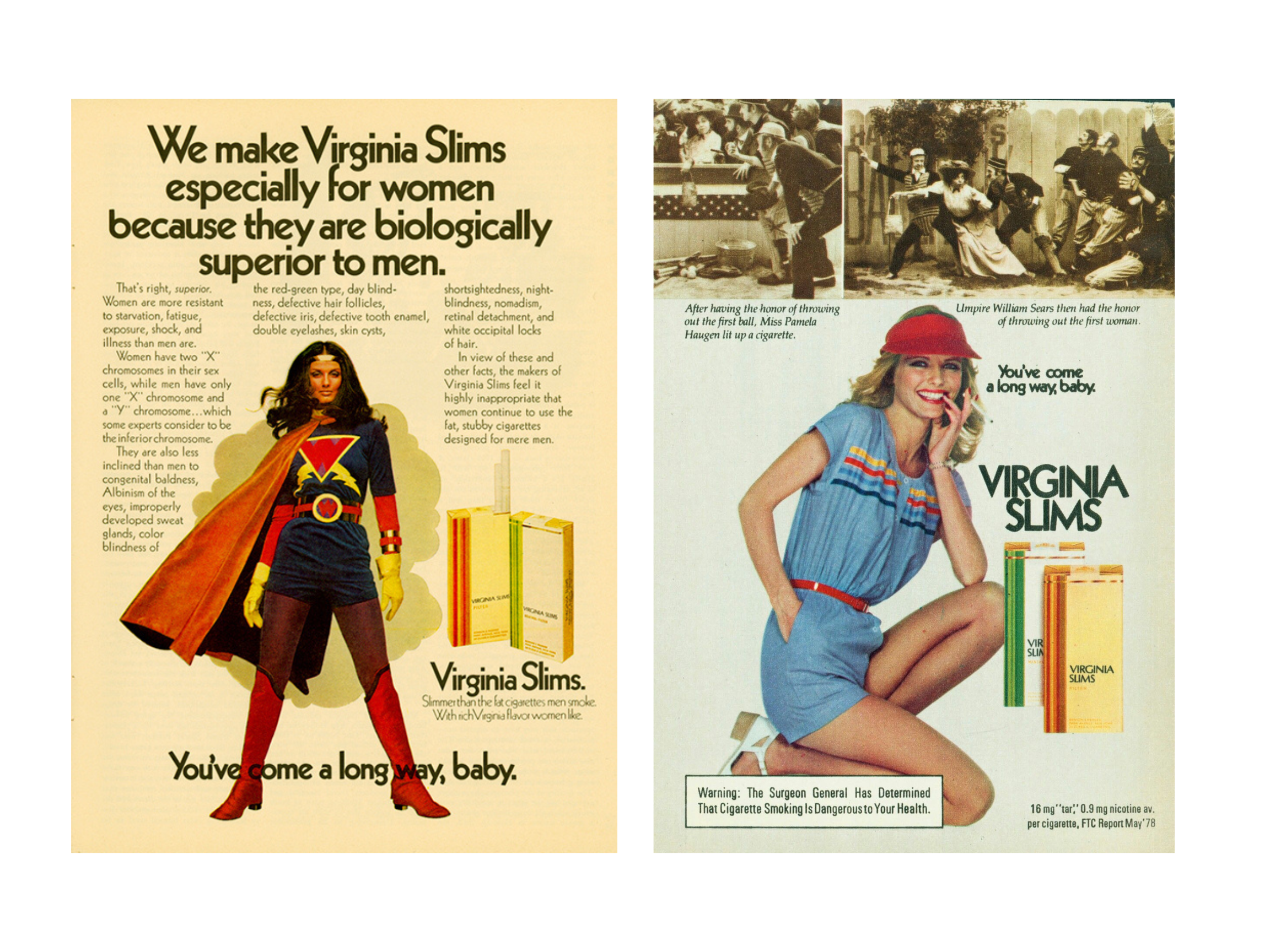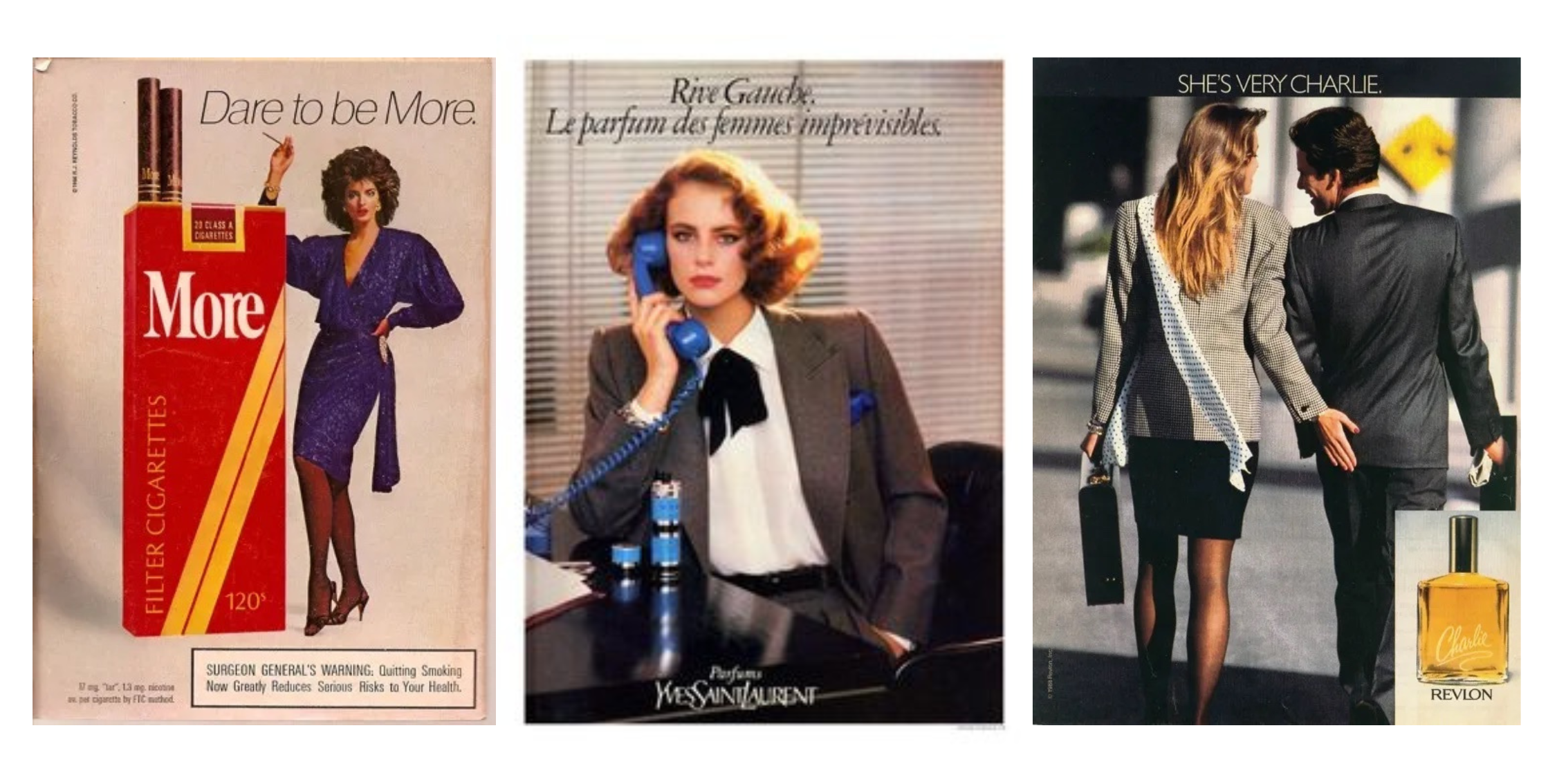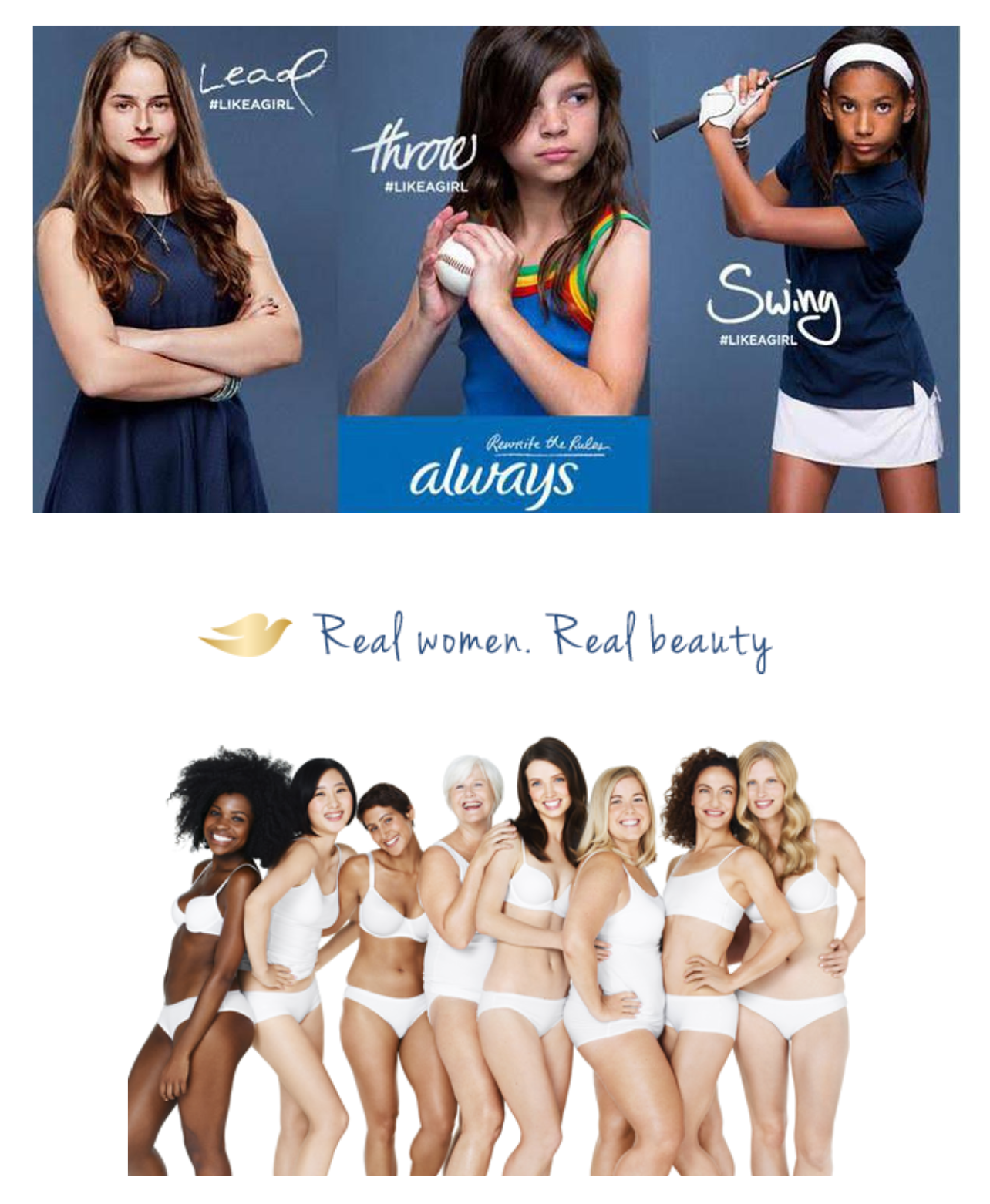What more do people know about women in advertising besides what they’ve seen on Mad Men? Not much really. We asked around. Not many people outside the industry understand that women have been fighting their way into creative roles and leadership positions in advertising since the 1800s. To celebrate Women’s History Month and our two female AOR owners, we thought it would be nice to talk a bit about women in advertising, how ads reflected women through the years, and what notable figures paved the way for the women we have working in advertising today.
The marketing and advertising industry is traditionally male-dominated, but we are making progress, as of 2019, women working in the industry were at an all-time high (64%). However, only 37.5 percent of those in leadership positions are women (as of 2023), yet The Women in Advertising and Communications Leadership (WACL) group claims (and we agree) that this number is most likely inaccurate due to the way agencies are “massaging their figures.” In reality, it’s probably smaller. The WACL is currently working to change the numbers. Their president believes in putting women in top jobs where “they can have the most systemic impact.”
But the history of women in the industry is a lot more dire than today’s numbers might reflect. They were silenced, not taken seriously, and reduced to secretary and assistant roles for much of the industry’s history, while things are changing now, it is as important as ever to remember how we got to where we are today.
While women were fighting for positions at agencies, the men were writing ads about them.
Women were portrayed as wives, cooks, cleaners, and mothers. Rarely did we see an ad where they weren’t in the home performing one of these duties. Most of the ads they were portrayed in on their own were for vacuums or cleaning products, but if they were in an ad with a man it was to glorify him.

Ads shifted — slightly. Not enough to be up to the standards we have today, but thanks to the Second Wave Feminist Movement during this time, the language and visuals on the ads started to paint women as confident, independent, and liberated. But again, by no means are these ads good representations of women.

This was around the time women were starting to get more and more roles working in advertising. With women in the workforce becoming more prominent, the ads that were coming out around this time were no longer portraying women as only being good for household duties. In the 80s, the ‘powerful women’ was a way to sell. Still, the standard of beauty was skewed and the ads were laced with underlying misogyny.

Several campaigns came out in the 1990s and early 2000s that started to flip the script. In the later 2000s, and of course now, women were more diversified, and portrayed in advertising as complex human beings. They started to be included in wide-ranging and stereotype-defying roles, as they are today.

‘The Long Story Short’ is our monthly newsletter highlighting everything from our agency’s latest work to industry happenings at large. Don’t miss out, sign up in the form below!
From what we know about early advertising, either women weren’t there at all, or they were reduced to secretarial roles and other assistant-type positions. Advertising is a male-dominated industry, that’s just the reality. And back when women had even fewer rights than they do now, they weren’t as present in the workroom. Women were expected to be quiet, so they were forced to make themselves small and often accepted their secondary roles. In the early-mid 1900s the advertising industry liked to think they were progressive, but in reality, the ‘boys club’ was all too real. You never really saw women creative directors or agency owners, few and far between if any. A lot can be said about the time between the early 1900s and today, but the change for women in advertising isn’t black and white, it’s been years of hard work, strong women, and new ideologies trickling down into the industry.
There is more action now that wasn’t possible 15-20, even 10, years ago. Women are speaking up, and now more than ever they are being heard. As we mentioned earlier, 64% of the industry is working women. This is a huge change from the first female copywriters and art directors to ever set foot in a client presentation. We’ve got a lot of work to do still, especially when it comes to diversity, but these numbers are good to see.
We have several women pioneers to thank for the progress that’s been made since their time. Below are the women who had to live through misogyny and unequal rights, the women who paved the way for all the powerful, smart, and creative women we have working at AOR today.
Mathilde C. Weil (1880)
Mathilde was the beginning. Weil began her career in advertising in 1867. She is credited as being the first female advertising employee and the founder of the first female-run advertising agency, M.C. Weil Agency in NY (est. 1880). She founded M.C. Weil 40 years before women were even allowed to vote, only 20 years after the Civil War, and a good three years before James Walter Thompson started his advertising agency. Thompson is still credited with opening the first-ever ad agency — let’s rewrite history.
Helen Lansdowne Resor (1908)
Resor is credited as being the first female copywriter. She was hired by J. Walter Thompson in 1908. She created the ‘A skin you love to touch.’ ad for Woodbury in 1917 and is known for having defined the editorial style of advertising we know today. She was inducted into the Advertising Hall of Fame in 1967. Fun fact: Resor coined the famous advertising motto ‘sex sells.’
Nedda McGrath (1926)
McGrath was the first female art director at a major agency. She joined Blackman Agency in 1926 and was quoted saying, “I know of no other women art director in the field. I was discouraged by everyone from making the attempt and had to work perhaps harder than a man.”
Bernice Fitz-Gibbon (1954)
Fitz-Gibbon is known mostly for her amazing career with Macy’s, becoming one of the most highly paid employees at the company. She changed a lot of the ways department stores advertised at the time. She started her own advertising company in 1954, after leaving Macy’s, where she came up with the ad line and corresponding campaign titled ‘It’s smart to be thrifty.’ She was inducted into the Advertising Hall of Fame in 1981.
Mary Wells Lawrence (1968)
Lawrence was the first woman to become CEO of her own agency. Her agency was the first agency with a female CEO to be featured on the New York Stock Exchange. Like Fitz-Gibbon, she also worked for Macy’s advertising department before moving to McCann-Erickson, Inc. She worked for Bernbach as well as a few other notable advertising men in the 60s and 70s before starting her own agency, Wells, Rich, and Green Inc. (WRG). In 1971, Lawrence was named Advertising Women of the Year and was inducted into the American Advertising Federation Hall of Fame in 1999. She is still alive today.
Caroline Robinson Jones (1977)
Jones was the first black senior copywriter at J. Walter Thompson Co. She was able to rise into a leadership position at the company, becoming creative director after having started as a secretary in the early 70s. She eventually went on to become the Vice President of the first black-owned advertising agency, Zebra Associates. She launched many of her own black-owned ad agencies during her career and was the genius behind Kentucky Fried Chicken’s ‘We do chicken right.’ slogan. She was a force to be reckoned with and although she made huge strides in the industry and worked on big clients such as American Express, McDonald’s, and Toys R Us, she was not inducted into the Advertising Hall of Fame, likely due to her race.
Louise McNamee (1985)
McNamee was the first woman appointed to run an already-established advertising agency. She did her due diligence, rose the ladder, and proved her way through her career to move from secretary to owner. She later became a partner at MVBMS becoming the first woman to be at the helm of a global advertising agency.
Writing this insight was for Women’s History Month, but it was also for the women who work at AOR. We wouldn’t be AOR without them and our two female owners, and the hard work and brilliant ideas they bring to the table. We make an effort to continually lift up the hard work of others at our agency, and that means all people.
But a special specific thank you to women in advertising and the women at our agency.
Happy Women’s History Month!
Contact us (and that includes all our amazing women) if you want to talk shop.